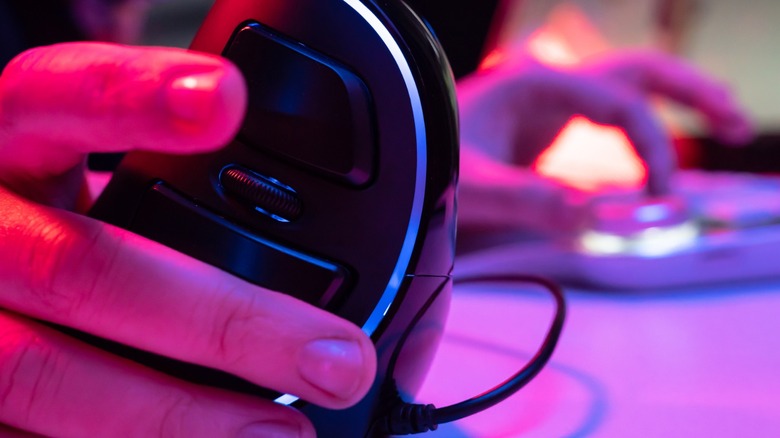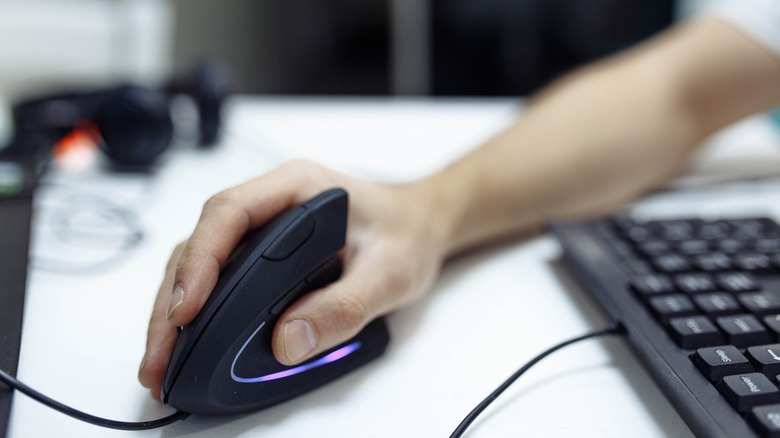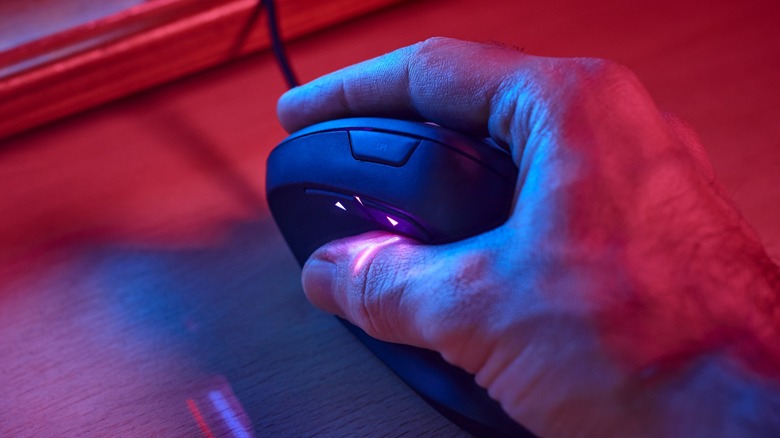Are Vertical Mice Any Good For Gaming? Here's What Users Have To Say
The main problem with using traditional flat mice is that they can come with ergonomic issues. Even for basic productivity tasks, like merely filling spreadsheets, you can feel forearm and wrist strain during prolonged sessions. If good old-fashioned spreadsheets make you feel this way, imagine what it's like when you add the rapid movements and high precision of fast-paced, competitive gaming and long hours with a mouse.
When you use a standard flat mouse, your hand is in a pronated position, with the palm facing downward toward the desk. This posture can keep the wrist and forearm muscles in a non-neutral position, increasing muscular strain over time. Prolonged use in this posture may contribute to muscle fatigue, and, in some cases, increase the risk of repetitive strain injuries. One such condition is carpal tunnel syndrome, where the median nerve is compressed at the wrist, potentially leading to pain, numbness, and tingling in the hand.
Vertical mice aim to solve this by making you hold your mouse in a more natural, handshake-like position. None of that pronated, palm-facing-desk grip that can lead to all the strain and pressure. Of course, this could be great for productivity, but could it be good for the quick motions that you need for gaming? We've checked out what some avid users of vertical mice have to say.
Can you game competently with a vertical mouse?
Unfortunately, there's no blanket answer to whether or not you can game competently with a vertical mouse. User recommendations vary depending on what type of game you're playing and personal preferences. City-building, 4X strategy (with pause), or turn-based games, for instance, have similar mouse movement demands to most regular productivity clicking. If there's no real-time competition and quick reaction and speed aren't required, you can easily play with a vertical mouse.
The problem comes when it's competitive gaming. What makes a mouse good for gaming isn't just its ergonomics, the mouse must have a high-DPI, sensitive sensor, and a polling rate of at least 1,000 Hz. This allows quick wrist flicks to register faster in the game, and it can make all the difference between winning and losing in stiff competition.
The palm-down style of holding a mouse is considered the most popular way to use a mouse and game. It's not as easy to flick your wrist across a mouse pad and aim when your hand is in a handshake position and the extra weight and unfamiliar mouse shape could throw you off. You simply won't get the same range of motion you'll get using a traditional mouse. You might be able to practice playing this way, but that's a steep and inconvenient learning curve that could hold you back in very competitive gaming.
You should try improving your overall ergonomics, instead
It's also worth giving traditional ergonomic gaming mice another try. They come in all sorts of shapes and sizes, so you may actually be able to find one that solves your wrist trouble. We have a list of the best gaming mice you can check out to find one that works for you. If nothing seems to help, you should also consider fixing your posture and investing in a snug ergonomic chair, since your sitting position and angle can greatly affect how you grip your mouse.
If you've already optimized your gear and posture but still experience discomfort, it may be time to look into grip styles. Many gamers default to a palm grip, but switching to a claw or fingertip grip can sometimes reduce wrist tension and improve precision. These styles shift the strain to a different muscle group, and with a bit of practice, they might feel more natural than you expect. Some mice are even designed to support specific grip types, so experimenting with grip-friendly models can make a surprising difference.


